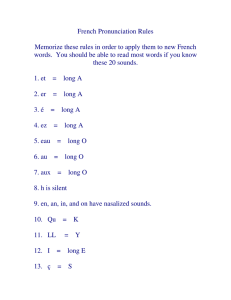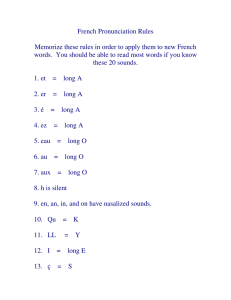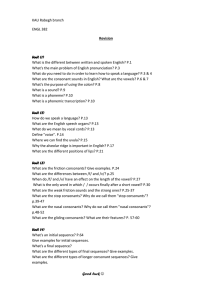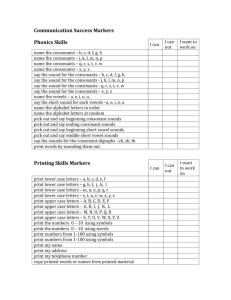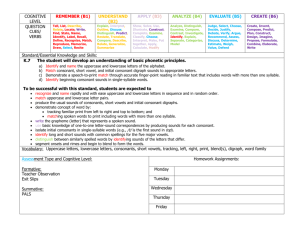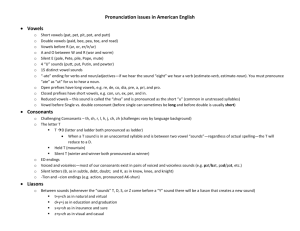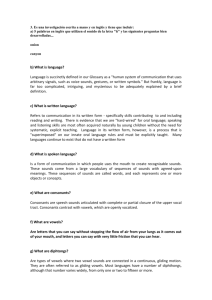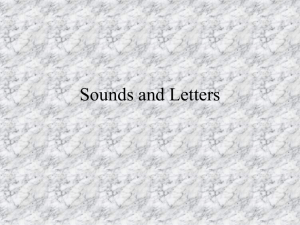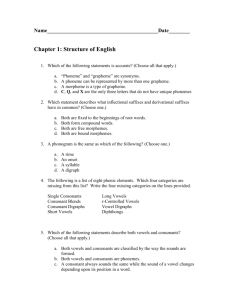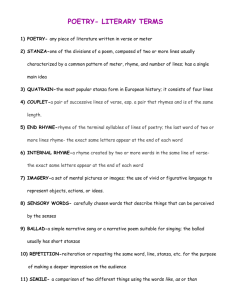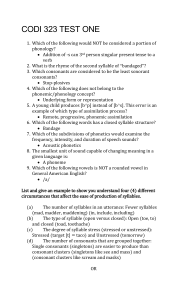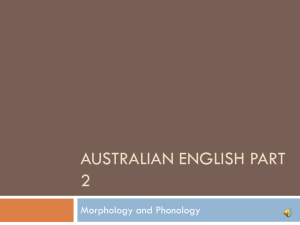Cheat Sheet for Skills Block
advertisement
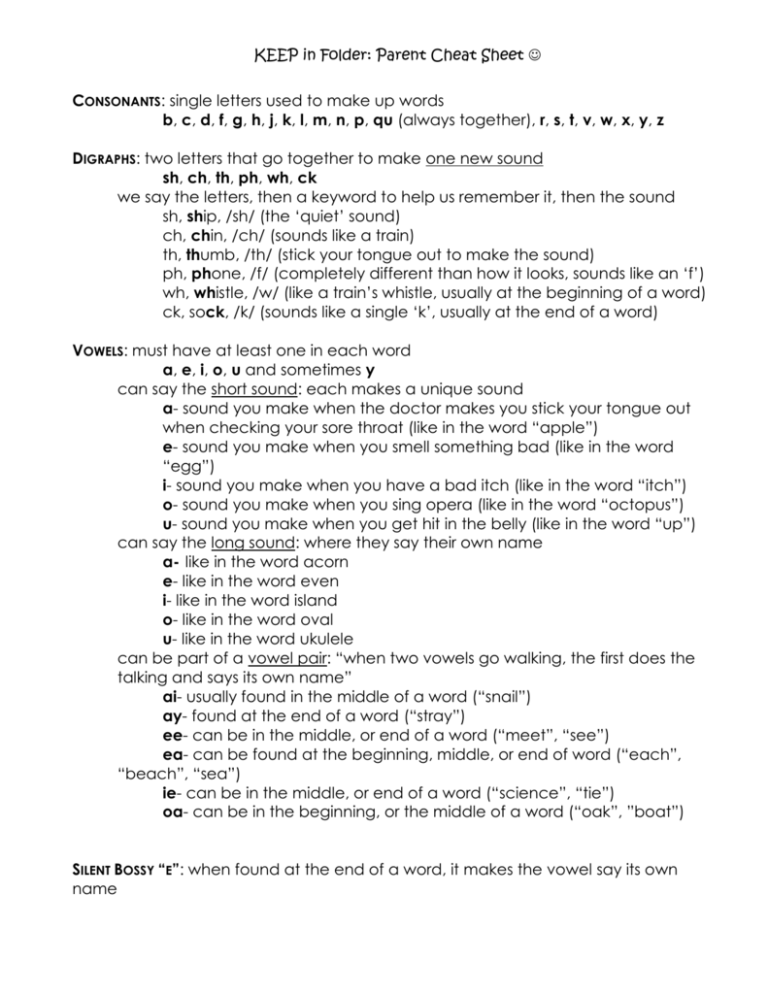
KEEP in Folder: Parent Cheat Sheet CONSONANTS: single letters used to make up words b, c, d, f, g, h, j, k, l, m, n, p, qu (always together), r, s, t, v, w, x, y, z DIGRAPHS: two letters that go together to make one new sound sh, ch, th, ph, wh, ck we say the letters, then a keyword to help us remember it, then the sound sh, ship, /sh/ (the ‘quiet’ sound) ch, chin, /ch/ (sounds like a train) th, thumb, /th/ (stick your tongue out to make the sound) ph, phone, /f/ (completely different than how it looks, sounds like an ‘f’) wh, whistle, /w/ (like a train’s whistle, usually at the beginning of a word) ck, sock, /k/ (sounds like a single ‘k’, usually at the end of a word) VOWELS: must have at least one in each word a, e, i, o, u and sometimes y can say the short sound: each makes a unique sound a- sound you make when the doctor makes you stick your tongue out when checking your sore throat (like in the word “apple”) e- sound you make when you smell something bad (like in the word “egg”) i- sound you make when you have a bad itch (like in the word “itch”) o- sound you make when you sing opera (like in the word “octopus”) u- sound you make when you get hit in the belly (like in the word “up”) can say the long sound: where they say their own name a- like in the word acorn e- like in the word even i- like in the word island o- like in the word oval u- like in the word ukulele can be part of a vowel pair: “when two vowels go walking, the first does the talking and says its own name” ai- usually found in the middle of a word (“snail”) ay- found at the end of a word (“stray”) ee- can be in the middle, or end of a word (“meet”, “see”) ea- can be found at the beginning, middle, or end of word (“each”, “beach”, “sea”) ie- can be in the middle, or end of a word (“science”, “tie”) oa- can be in the beginning, or the middle of a word (“oak”, ”boat”) SILENT BOSSY “E”: when found at the end of a word, it makes the vowel say its own name KEEP in Folder: Parent Cheat Sheet a_e, e_e, i_e, o_e, u_e there will be a consonant or digraph between the vowel and the bossy ‘e’ examples: make, eve, ice, hope, rude when the bossy ‘e’ is with the ‘u’, it makes the ‘u’ say “oo” (like in “cool”) BLENDS: two consonants that are said together; one is a quick sound, the other is a slow sound bl, br, cl, cr, dr, fl, fr, gl, gr, pl, pr, sm, sn, sp, tr, wr, Two sounds blended together like milk and icecream in a milkshake Examples: blow, brush, cloud, crab, drum, flower, frown, glad, grape, play, prince, small, snake, spell, tree, wrestle Can also be three consonants that are said together scr, spl, spr, str, thr Examples: scream, split, spring, street, three DOUBLE CONSONANT ENDINGS: when these consonants are at the end of a word, the consonant must be doubled ff, ll, ss, zz can be remembered by the phrase “fat lady singz” examples: scruff, will, mess, buzz WELDED SOUNDS: letters that when found in words, are glued together to make a sound am, an, all, ang, ing, ong, ung, ank, ink, onk, unk, old, olt most of these can not be “sounded out” separately to make the correct collective sound we teach these also as word families- each welded sound has a keyword to help us remember the sound… am-ham; an-fan; all-ball; ang-fang; ing-ring; ong-song; ung-lung; ank-bank; ink-pink; onk-honk; unk-junk; old-cold; olt-colt SUFFIX: adding a letter(s) onto the end of a word to change either the quantity or tense -s, -ing, -ed Examples: hats, jumping, crashed Thank you for supporting your child’s education at home! Your efforts at home make a huge difference in the classroom!


